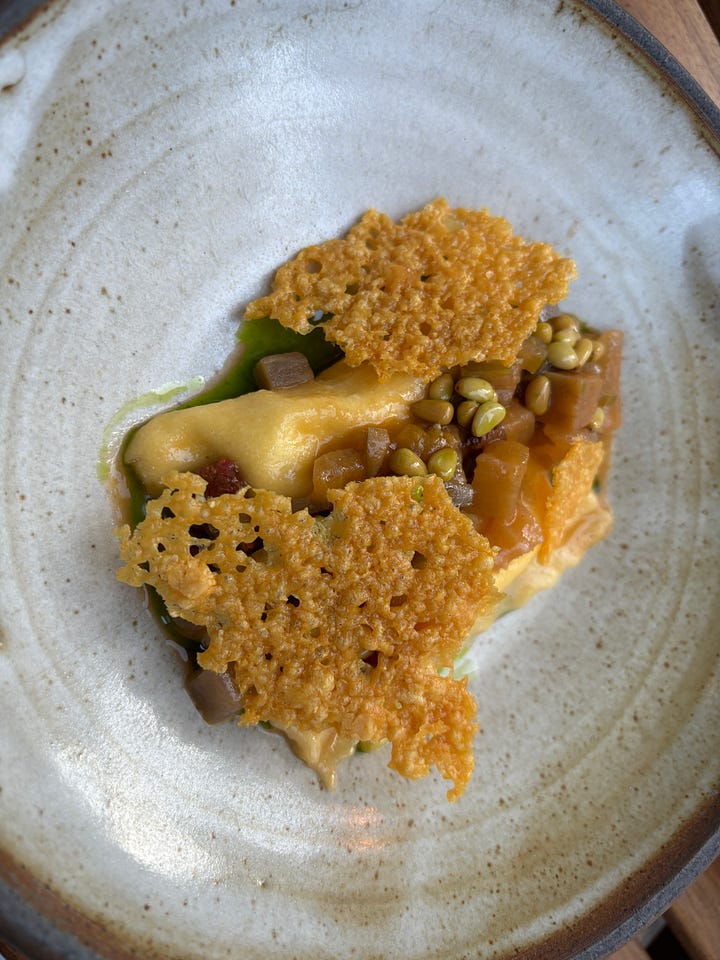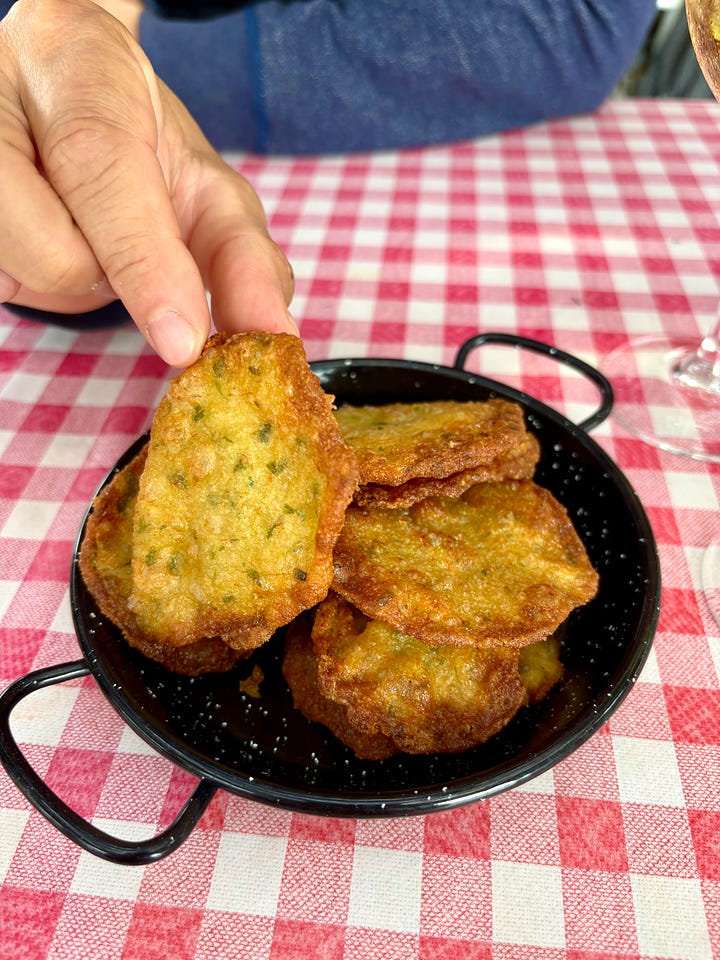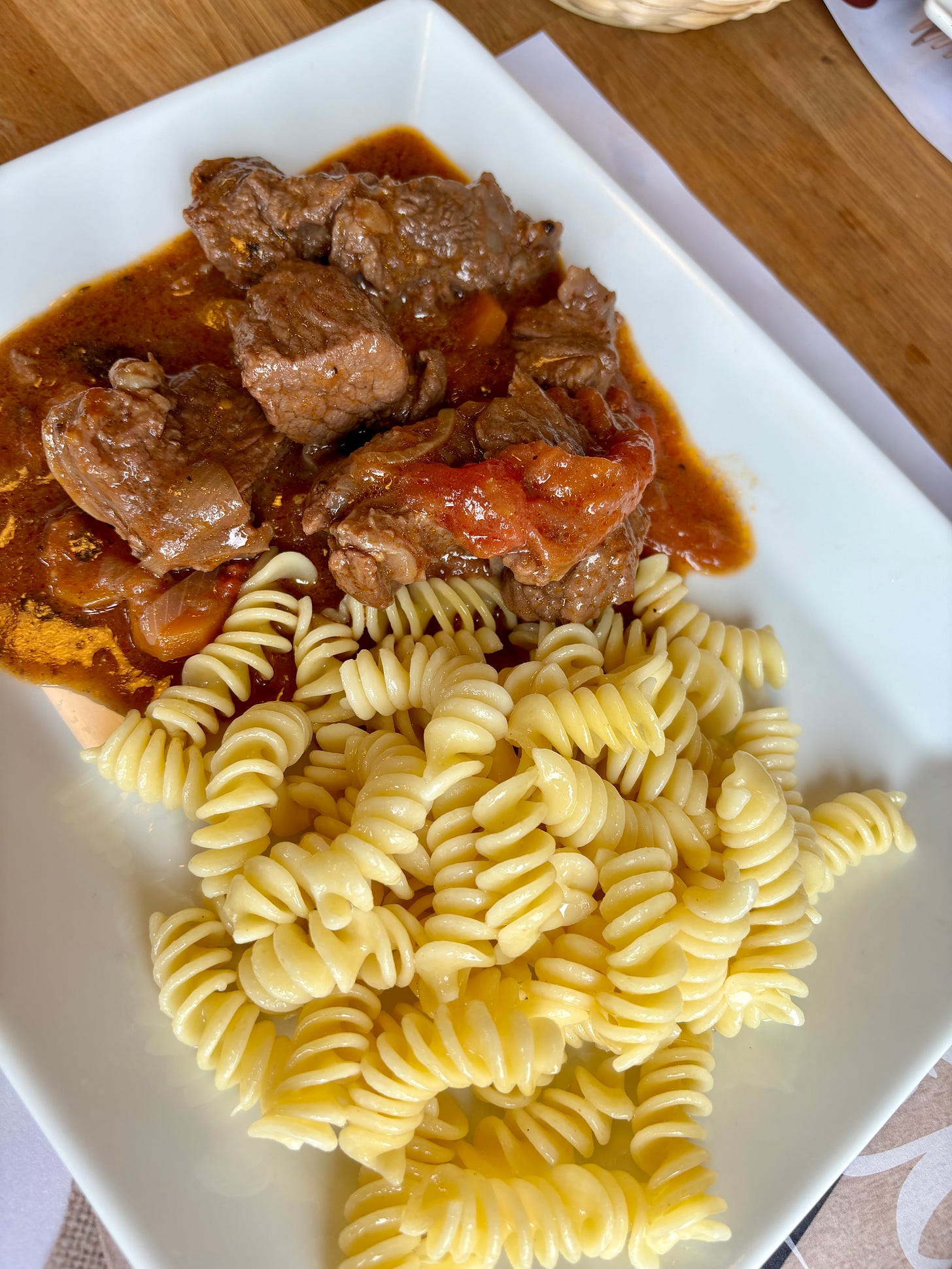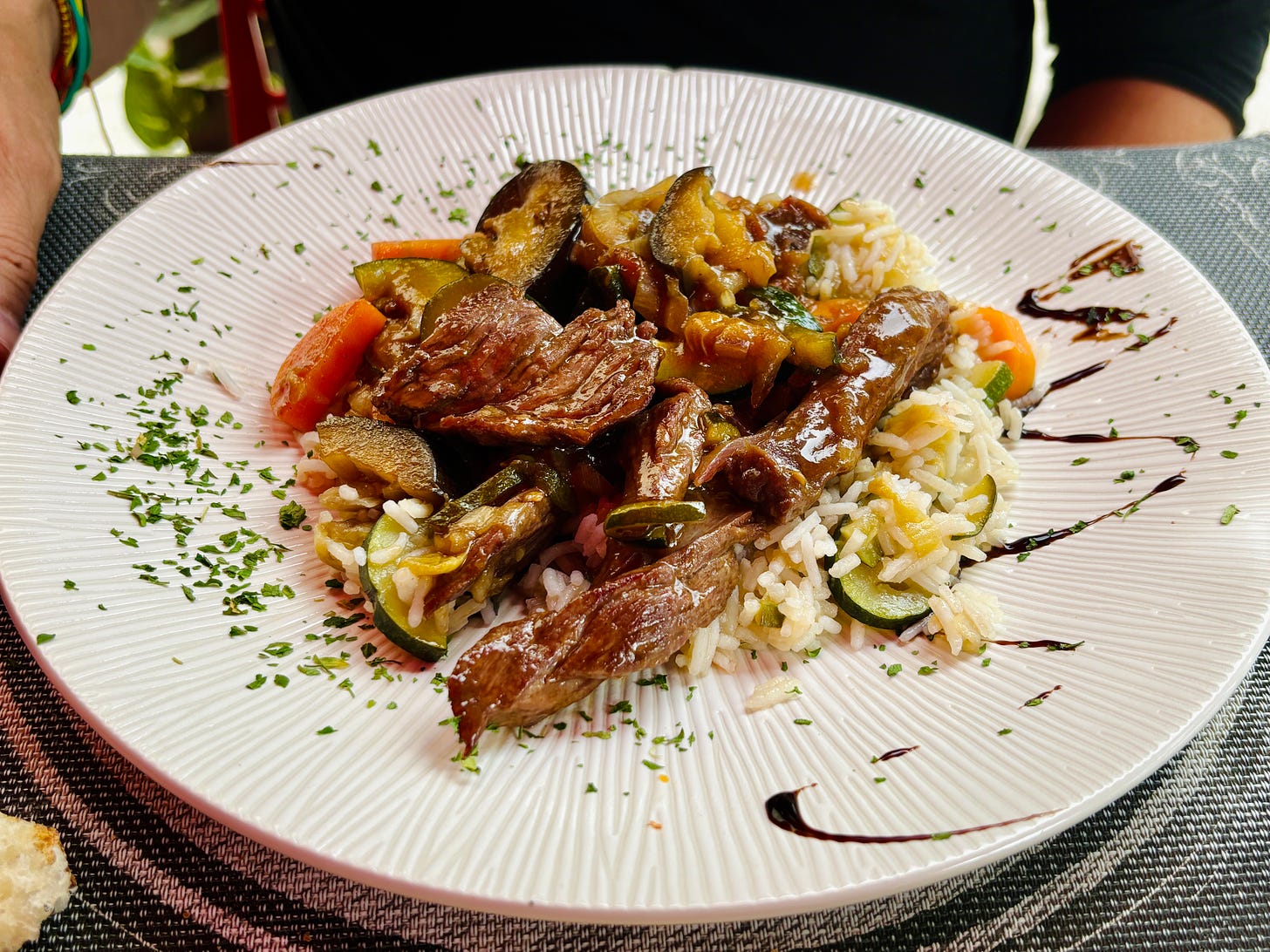We took our vacation this summer in September, which was a good thing as the Paris Olympics turned out to be a lot of fun, and the dire predictions about the city being overcrowded and disorganized didn’t come to pass. Although, a number of small businesses were severely impacted by the loss of business due to people staying away from Paris this summer over those concerns, and others. But the bigger picture is that people all over the world saw the best of Paris, and even the grumpiest of Parisians who fled the city had quite a bit of FOMO, and the subsequent Paralympic events were well-attended, and those athletes were able to share the limelight.
We had to miss those as we left town at the end of August, and I tried to spend as little time online as possible during our two weeks away to focus on relaxing in Provence and the Languedoc-Roussillon. While traveling by train is enjoyable, and you avoid the 8-hour drive (I can’t legally drive in France because I haven’t had the courage to try to get a French driver’s license, which a friend described as “the hardest thing I’ve ever done in my life,” which was even harder than getting French nationality, it’s just a lot easier driving. So Romain has to do all the driving.
The upside to driving is that the highways are in great shape, due to steep tolls to ride on them. For people in the States complaining about high gas prices, gas in France is about three times higher, roughly $8/gallon(!) But it’s nice to have a car with ample storage space for stopping at all the flea markets in the French countryside, which I plan to do a separate post about soon, including how to find them.
Unfortunately, it’s easy to eat not-great food en route in France. When I moved to France, a French friend told me: “Daveed, in France, we go out to be with our friends, not for the food.” And a friend who lives in the Languedoc-Roussillon said to me last year, after we had a so-so meal at a highly lauded (by the locals) restaurant: “People in this region don’t make a lot of money, but they also know how to cook. So when they go out, they go for the experience, not necessarily for the food.”
There was the famous dip in dining fifteen years ago, written about in books like Au Revoir to All That, as well as in newspapers and magazines. While people blamed the journalists for writing about it, it prompted restaurants in France to start using the term, and displaying the symbol, Fait Maison at places that make their food from scratch.
It seems to have fallen by the wayside, but if you look carefully for restaurants in the countryside, you can find some gems. My strategy when looking at restaurants online is to look at the pictures, rather than comments. They can tell you a lot.
Our first night on the road, we had a terrible (a word I don’t use lightly…) Grand Aïoli platter of previously frozen fish, industrial mayonnaise, a soggy, sad heap of overcooked vegetables, and shrimp that was so overcooked that it couldn’t be peeled, which I didn’t know was possible.
The restaurant had all sorts of five-star reviews, accompanied by beautiful pictures of food that looked nothing like the food we were served. Oh, and the first-course ceviche smelled a bit off. After that, I did more research before we went anywhere, as we headed farther south, to our destination.
One skill I do have is finding things at flea markets. I found this generous tian, below, that was dirty but so beautiful I couldn’t resist it, as well as a few others.
I also found a unicorn—the French equivalent of Stretch-Tite (oddly, at an antique shop), which had a similar cutter to its American counterpart. I go through one roll every three to four years, and I even trim the pieces down to fit over containers so as not to waste any. (Those who are concerned about plastic wrap and waste should stop using toilet paper, which is massively wasteful, and get a washlet or sprayer instead.)
I didn’t buy the used roll of film but will look for it next time I’m running low; someone brought me four rolls a few years ago, and I’m still on the first one, so that’ll likely be in 2037. But I was happy when we landed in Provence and found a wonderful Grand Aïoli, which made me forget about the forgettable one, and more…
We found our real Grand Aïoli here, made with garlic mayonnaise fait maison. The server was racing around when I got there, while Romain tried parking the car in the very popular village of St. Rémy de Provence. We arrived late due to traffic, which we called to let them know about, and all the lovely tables outside were full. I asked if one might be available shortly. She said non, adding that if we’d arrived by our 7:30 reservation time, we could have eaten outside. I was directed inside, where I was seated, and gazed out the window at people enjoying their early evening dinner on the terrace.
When Romain arrived, I apologized about not getting a table outside, and he immediately started working on getting a table outside, as one was about to be libérée (liberated). I didn’t get any pictures, other than of the homemade aïoli, above, made with the excellent olive oil from the nearby Moulin Castelas, but if you’re in the area and looking for classic Provençal food, including soupe au pistou, this is your place. Just be sure to reserve…and show up on time. (Or with Romain.)


Recommended by a friend in the region who we were staying with, this wasn’t on my radar when I was looking for places to dine. Located in the small town of Fontvieille, this is true cuisine du marché, market-based cooking. We weren’t particularly hungry that day for lunch, so we ordered what sounded light on the menu: cold cucumber soup with feta mousse and dill pesto, which was nice on the warm day (yes, on the terrace), and Romain went with Épaule de taureau (braised bull), above right, which is a specialty of the region (which ended up not being light, but he liked it), and I went with the Grilled pork with smoked paprika, a delicious zucchini crumble, and smoked eggplant ketchup underneath, a condiment that was originally not made with tomatoes but a preserved paste made with fish, vegetables, fruits, or nuts.
We split a dessert of Prunes confites, which ended up being a plum crumble topped with oatmeal and coconut sugar.
The word prune in French refers to fresh plums, rather than dried ones, as it does in English. And we had no shortage of fresh fruit while we were in Provence. We found an amazing fig tree that was loaded with so many figs, they were falling off the branches in syrupy puddles, with their naturally sweet-sticky sap leaking out them.

More on those later, but we also dined really well in Arles…




Chardon in Arles changes its chef every few months, welcoming visiting chefs like Preston Miller, who is originally from New York and who’s worked at some of the best restaurants there as well as in Paris and Marseilles.
There are no choices here, although they’ll make adjustments to the menu for any food allergies or aversions. Our €55 four-course dinner (which would have been $180 in San Francisco or New York, where, admittedly, the gas is cheaper) was outstanding.
The first course was a plate of seared amberjack with a fermented chili vinaigrette, raspberries, and toasted yeast. It was so good, we were looking forward to everything that was going to follow. We then had ricotta-filled agnoletti with caponata and crisp Parmesan tuiles. Following that was roasted maigre, a firm-fleshed whitefish with sorrel sauce, habanero-tomato sauce, fried shiso, and local chanterelles. Dessert was black fig sorbet with grape caramel, fig leaf oil, and wisps of brik pastry.
It was really an excellent meal and not too heavy, which was appreciated. We left really satisfied, but this is another place to reserve. There are a lot of tourists in Arles, and restaurants fill up, and they were turning a lot of people away since they’re small and don’t have a lot of seats. (And, as always, if you can’t make a reservation at any restaurant, be sure to cancel.)




Also near the town we were staying in, one night we had dinner with some local friends at Table de Meunier, which has been around for nearly 35 years and is somewhat of a local legend.
We had a chicken terrine with pickled eggplant, above left, that was fine as well as rosé, which is pretty much obligatory to drink when in the south of France in the summer, and they often serve it with a little bucket of ice to drop a few cubes in. For my main course, I had a ceviche surrounded by cucumbers, where the fish was closer to cooked than raw. (After my prior experience, I was almost relieved this version was cooked.)
My main course was Haché de sanglier (wild boar) with Sichuan pepper, above. It was very…local, and didn’t match the food at Chardon or La Cuisine au Planet, but we were in very good company and also had a fun time with the server, who sat in the bric-a-brac filled garden with us while taking our order and bantered back and forth with us during dinner.

Another meal we had, at an address not worth mentioning—not because it was good or bad, but because it was in the middle of a nondescript office park while we were driving from Provence to the Languedoc-Roussillon—was this Daube niçoise at a restaurant that said on the blackboard outside: “Cuisine Fait Maison - 98.9% Lol!”
I’m guessing the 1.1% part was the pasta. The restaurant was filled with office workers, and the staff was very friendly. The rest of the menu was burgers and pizza, and for anyone who doesn’t believe that the French are some of the largest consumers of pizza in the world, every town, village, and city we passed or visited had a pizza shop seemingly on every corner. In places where there isn’t a shop, there’s a pizza machine, like this:
We didn’t have any machine-made pizzas, but we did have an excellent burger at…
Located on the banks of the Canal du Midi, this seasonal grillade (grill restaurant) is one of our favorite places to eat in the area. It also has one of my favorite dining tables anywhere.
This simple restaurant has seats on the ground and a wine list full of affordable local wines. The one we had wasn’t expensive (€25) and went just as well with the burger as it did with the generously-sized, and excellent, duck breast served with squash puree.
The staff is always friendly here, and we really like the laid-back vibe of eating on the banks of the canal, and it’s nice to eat things cooked over the fire, which we don’t get in Paris.


‘Twas early September, after tourist season ended, when we went to Bistro La Nautique for lunch on the outskirts of Narbonne. The servers weren’t really up for a lot of chit-chat. Romain accidentally jostled one when he pulled out his chair, and he got a frosty look for doing that. (I’m used to it.) But I think we got handed off to another server, who found Romain amusing. (Whew!)
We come here every year, and I’ve noticed there are more and more upscale types (and fancier cars in the parking lot) every time. But still, there are other fun diners. We had a good talk with the neighboring table about which antique stores to hit in the area, and we had a laugh running into them after lunch roaming through the aisles at the local Emmaüs thrift shop.
The food here is reliably fresh, delicious, and fait maison. We began with a little dish of tortillas de morue (salt cod) as well as an Escalibade of vegetables and smoked sardines. Their chicken croquettes are always excellent, as is their pâté de campagne.
I had the Dos de vraie morue (true cod) gratinéed with aïoli. I had it last year and remembered how good it was, and uncomplicated, which is how I prefer my seafood. I keep thinking that I want to try it at home. I don’t know if they put the aïoli on after cooking, or before? And if they do it before, what keeps it from breaking? I guess I’ll have to go back next year and ask…
If you want to dine with the locals, you can’t do better than at Les Trois Petits Cochons. Open only for lunch, it’s priced for the locals as well with the daily two-course menu clocking in at a mere €19, and if I’m not mistaken, my glass of rosé was €1.50.
Romain wasn’t very hungry, so he skipped the first course, and I had the Warm goat cheese salad with honey on toasts, which was quite good, although I didn’t get a picture because I know the drill: He says he’s not hungry and doesn’t want a first course, then ends up eating half—or more—of mine, so I was defending my territory.
We both had the Émincé of yakitori-style beef, which you’re probably not thinking people eat in French villages, but they do. And after eating French food for a few weeks, this California boy needs some Asian flavors. It was fine and hit the spot, and I appreciated that the vegetables were fresh and bright because I was also craving some vegetables, too.
This “dine with the locals” spot is next to where they press L’Oulibo olive oil, a local specialty, and I picked up a few jars of their fresh Lucques olives, which are divine.
Again, my dining companion said he didn’t want a first course, but I couldn’t resist the œufs mayonnaise, a café classic, here served with tuna, which I already resigned myself to sharing, based on #experience.
Continuing in the Japanese(ish) vein, we both had the yakitori-style chicken, which was actually served yakitori-style, i.e., on a skewer. (If anyone wants to unravel why countries translate foods without any links to the real deal, they could start with French tacos, a flour tortilla enveloping heaps of cheese, French fries, meat, ketchup, cream or mayonnaise…and a whole lot of other things you never would see in an actual taco, after they figure out the whole fried-chicken Caesar Salad thing.)
Romain didn’t love his chicken yakitori, saying it was dry, but he’s not a fan of boneless chicken breasts in general, unless I make them at home, which I do by marinating them in lots of herbs, chopped garlic, salt and pepper, and olive oil. We skipped dessert as we were anxious to get to La Brocabize, a favorite antique store that’s just 5 minutes away.
(Stay tuned for part 2…)



























Thank you David for sharing your vacation with us..as well as an adorable photo of Romain, who should write a missive describing exactly how to persuade restaurant staff to accommodate
requests. A French couple I met (i.e. nodded in greeting) in the parking lot of a restaurant near
Renoir's Giverny saw my disappointment at being turned away and interceded on my behalf.
I got a lovely table outside; told them merci! I had walked there in the heat from the Giverny gardens. The kindness of French strangers is still fresh in my mind 20 years later.
Your experience with the crummy aioli and ceviche makes me wonder the same thing I always do when confronted with bad restaurants: What in the heck are they doing? Surrounded by the world's best ingredients (in my part of the world, the Pacific Northwest, and your part of the world: ALL of France), they produce such dreck! Why don't they just become auto mechanics or vacuum sales people? What compels them into the restaurant industry when they are so abysmally bad at it? It's like someone buying a paint-by-number velvet Jesus and trying to sell it in a fine art gallery.